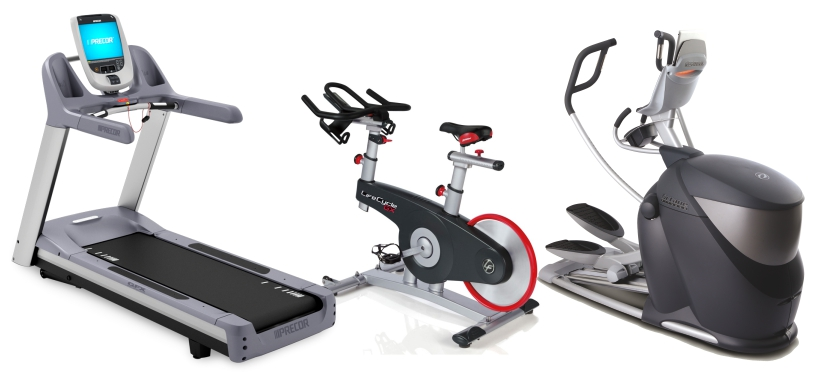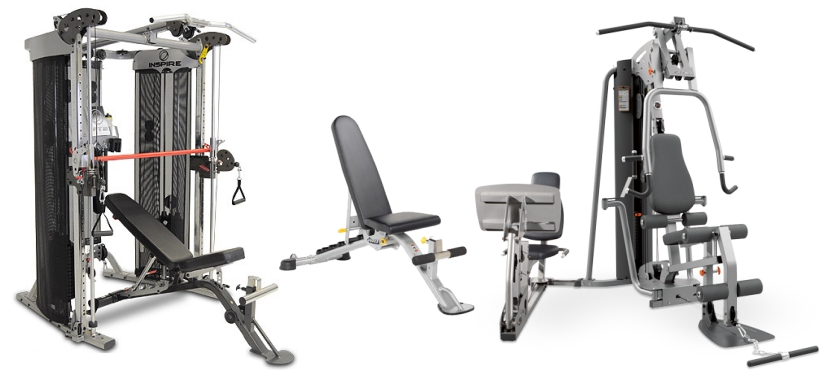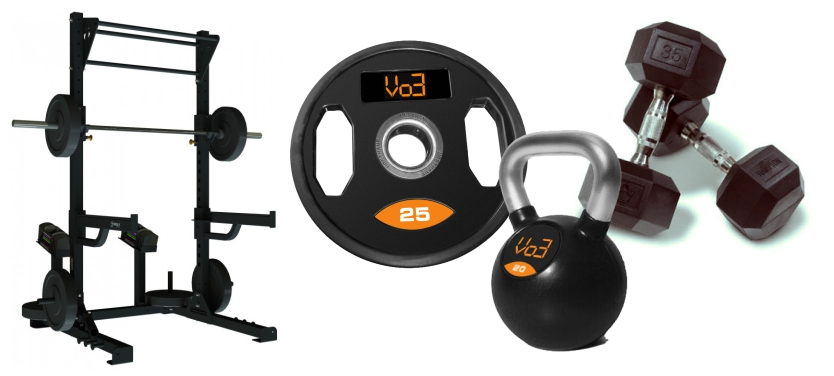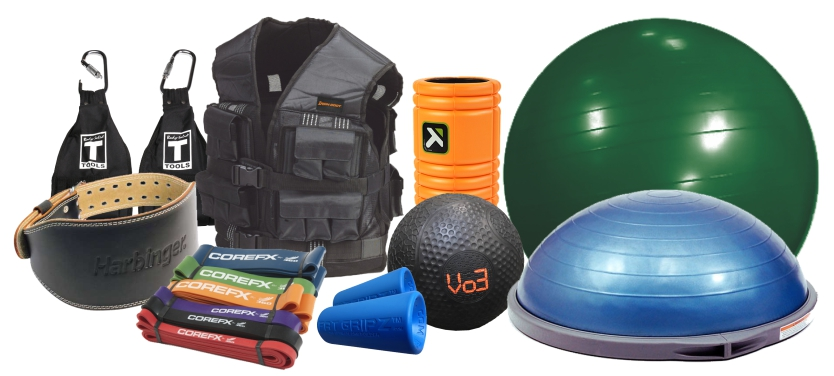
Maximum Muscle Activation
The main reason people make for not exercising is time. Everyone is under some variety of time crunch situations, either with work, kids, school we can all relate. Every single client I have met is looking for the highest bang for their time-commitment buck. This can be seen with the popularity of short workout videos and programs such as Tabata that provide the benefits of extended workouts without the time commitment that most need. Most people have been lead to believe that in order to gain muscle and sports performance they need to hit the weights for hours on end, until now.
Bret Contreras, a certified strength and conditioning specialist has developed a comprehensive study analyzing a variety of common exercises and which ones provide the best average contraction and the highest peak contraction on major muscle groups. This may sound overwhelming at first but let me explain. For individuals looking to gain lean muscle mass, the best way to achieve this is by constant or average tension on the target muscle. The higher the level of constant tension, the more microscopic tears in the muscle and eventually the bigger and stronger the muscle will become. In contrast, athletes looking to increase explosive strength will want to put the target muscle under the most total amount of tension or peak contraction. The muscle will become used to applying maximal effort and this will translate to a quicker and stronger contraction for a few short reps, which is optimal for athletes looking to gain explosiveness in a certain activity. By understanding what exercises are best suited for your goals you can shape a routine that optimizes time and results.
Muscular contractions are measured by using Electromyography (EMG), essentially EMG measures the quantity and quality of electrical signals fired by motor neurons that contact the muscle. So EMG measures the amount of force the body can exert on a muscle, thus providing information on how active a muscle becomes during an exercise. EMG works by placing electrodes across the muscle and measuring the speed and strength of the electrical signals between those two points. The baseline was created by applying these electrodes to the targeted body part then allowing the test subject to perform a maximal isometric flex. This isometric flex is seen as maximum voluntary contraction and will be the baseline of 100%, all other values listed are based off of a percentage of this voluntary flex. For example, if the subject performed a barbell bench press and the pectorals were observed to have a 115% average contraction that would mean that the exercise produced a 15% harder constant contraction then just flexing the muscle voluntarily.
The following tables show the best exercise for the “average value” and the best exercises for “peak value” for that given body part.
Chest (Pectoral)
|
Muscle |
Best Exercise Yielding Highest Mean |
Average Value |
Best Exercise Yielding Highest Peak |
Peak Value |
|
Upper Pectoral |
Mid Pulley Crossover |
154.0 |
DB Incline Press |
310.0 |
|
Band Push Up |
115.0 |
Guillotine Press |
302.0 |
|
|
Middle Pectoral |
DB Bench Press |
204 |
Guillotine Press |
511 |
|
Floor Press |
132 |
DB Bench Press |
451 |
|
|
Dumbbell Fly |
133 |
Dumbbell Fly |
493 |
|
|
Lower Pectoral |
Weighted Dip |
214 |
Guillotine press |
502 |
|
Blast Strap Push Up |
177 |
Dumbbell Fly |
450 |
|
|
Guillotine Press |
169 |
Weighted Dip |
418 |
The majority of gym-goes would expect that the bench press would dominate this table but as seen it does not unless dumbbells are used. The pectorals main function is to draw the arm towards the midline, which is exactly what the mid pulley crossover stimulates. When looking at the middle pectoral all these exercises have the same main movement pattern with the elbows going behind to their furthest position from the midline of the chest, this allows for a greater stretch and overall contraction. The lower pectoral also responds well to this full stretch as see with the weighted dip and guillotine press. This table proves that the chest responds best to isolation exercises from many angles over the traditional bench press.
Shoulders (Deltoids)
|
Muscle |
Best Exercise Yielding Highest Mean |
Average Value |
Best Exercise Yielding Highest Peak |
Peak Value |
|
Front Deltoid |
Seated Behind Neck Press |
274 |
Seated Behind Neck Press |
471 |
|
Seated Military Press |
162 |
Standing DB Military Press |
432 |
|
|
Incline Press |
144 |
Incline Press |
390 |
|
|
Middle Deltoid |
Band Face Pulls |
90.7 |
Band Face Pull |
152 |
|
Lateral Raise |
84.3 |
Lateral Raise |
213 |
|
|
Seated Behind Neck Press |
69.5 |
Cable Lateral Raise |
136 |
|
|
Rear Deltoid |
Band Face Pull |
144 |
Band Face Pull |
252 |
|
Bent Over Rear Delt Raise |
94.7 |
Bent Over Rear Delt Raise |
182 |
This data confirms that pressing movements are best at stimulating the front deltoids. The behind the neck press eliminates the introduction of the pectorals and thus making it more effective. I will note that although that the behind neck press is rated as the most optimal it can be very dangerous and should be avoided by beginner and intermediate lifters. The most interesting part of this table is the effectiveness of the face pull. Many lifters have used the face pull for shoulder health and rear deltoid activation although it ranks the highest in terms of activation of the medial deltoid.
Arms (Biceps and Triceps)
|
Muscle |
Best Exercise Yielding Highest Mean |
Average Value |
Best Exercise Yielding Highest Peak |
Peak Value |
|
Biceps |
Weighted Wide Parallel-Grip Pull Up
|
109 |
Weighted Chin-Up
|
205 |
|
Weighted Chin-Up |
107 |
Weighted Wide Parallel-Grip Pull Up |
184 |
|
|
Barbell Curl |
94.7 |
EZ-Bar Curl |
146 |
|
|
Triceps |
Rope Extension |
135 |
Rope Extension |
276 |
|
Cable Extension |
132 |
Cable Extension |
255 |
As this table shows, the best way to develop biceps is by introducing weighted pull ups and chin ups, which are already great back exercises. Thus, instead of doing multiple sets of curls you can cut down on time by incorporating weighted chip ups and pull ups to hit both your back and biceps effectively in a shorter duration. In contrast, the triceps respond much better to isolation exercises and most notable rope extensions for both lean mass development and peak activation.
Quads
|
Muscle |
Best Exercise Yielding Highest Mean |
Average Value |
Best Exercise Yielding Highest Peak |
Peak Value |
|
Quadriceps |
Half Squat |
101 |
Full Squat |
194 |
|
Parallel Squat |
99.9 |
Parallel Squat |
189 |
|
|
Quarter Squat |
65.2 |
Band Skorcher Hip Thrust |
172 |
|
|
Adductors |
Single Leg Gliding Leg Curl |
61.6 |
Romanian Deadlift |
163 |
|
Hack Lift |
47.9 |
Single Leg Gliding Leg Curl |
120 |
|
|
Russian Leg Curl |
46.5 |
High Step Up |
104 |
No surprises here as we should all know by now that the squat is king of quad development. The only notable item is that the quad is under the majority of average tension by not going past the half squat position. Thus if you are looking to build lean quad mass you do not need to continue with the full, deep squat. The adductors can be stimulated by squatting or leg pressing with a wider stance, this will help to engage and develop the often forgotten adductors. .
Hamstrings, Glutes & Calves
|
Muscle |
Best Exercise Yielding Highest Mean |
Average Value |
Best Exercise Yielding Highest Peak |
Peak Value |
|
Gluteus Maximus |
Band Hip Thrust |
88.3 |
Band Hip Thrust |
160 |
|
Glute Bridge |
65.3 |
Glute Bridge |
142 |
|
|
Pull-Through |
61 |
Hip Thrust |
138 |
|
|
Hamstrings |
Dead lift |
105 |
Rack Pull |
181 |
|
Rack Pull |
105 |
Dead Lift |
179 |
|
|
Calves |
Heavy Calf Raise |
134 |
Parallel Squat |
263 |
|
Explosive Calf Raise |
124 |
Heavy Calf Raise |
211 |
|
|
Single Leg Calf Raise |
104 |
Pause Calf Raise |
177 |
Interestingly, the glutes seem to respond to more isolation-bodyweight exercises. This would shock the female bodybuilding community as it is believed that the squat is the best for glute development. Rack pulls and dead lifts are far away the best exercises to stimulate both tension and peak activation in hamstrings. Overall the calves respond to heavy loads, in order to save precious time, you can use parallel squats to target both the quads and calves for development in half of the time. As seen the calves respond to heavy rep ranges from roughly 6-10 reps, rather then the tradition marathon calve-burn sets.
Back & Traps
|
Muscle |
Best Exercise Yielding Highest Mean |
Average Value |
Best Exercise Yielding Highest Peak |
Peak Value |
|
Lats |
Weighted Chin-Up (Supinate Grip) |
108 |
Weighted Pull-Up (Pronated Grip) |
167 |
|
Rack Pull |
93.1 |
Rack Pull |
163 |
|
|
Traps |
DB Bent-Over Row
|
123 |
Prone Trap Raise |
186 |
|
DB Elbows Out Chest Supported Row |
100 |
DB Bent Over Row |
126 |
Both of the weighted chin up variations supinate (underhand grip) and pronate (overhand grip) are at the top of the list for both average and peak contraction. The majority time saver is using bent-over dumbbell rows for both lat and trap development. No need to do a plethora of weighted shrugs to activate the traps.
After reviewing these tables I believe it is obvious to point out some factors that may have altered the results. In this case Bret developed the data mainly for bodybuilders or individuals trying to gain lean mass, that being said the participants were advised to pick weights that they could sustain for at least five proper repetitions with good form. This eliminates the majority of power lifting and Olympic lifters as they as more concerned with a single repetition and not the contraction power generated from multiple reps. Therefore, this data does not represent the muscle activity that would be generated from a one rep max effort. Also these tables are not a “one size fits all”, meaning that every person will have unique genetic and mechanical development that would alter these results significantly.
This kind of EMG study is in its infancy and should be taking with a grain of salt, I have implemented many of these exercises into my routine to cut down on time and hit multiple muscle groups synergistically. I have also steered away from the exercises I had become too comfortable with and implemented some of the exercises on this list that I had not done or did not enjoy doing.
Final thoughts and conclusion:
- Barbell bench pressing did not make the list for pectoral development
- Lat pull down is not one of the most effective exercises for engaging the lats
- Deep, full squats are not the best for quad development
- Bodyweight isolation exercises are better for glute development then traditional squats
- Calves respond best to heavy weights and less reps
- Medial and rear deltoids are stimulated best by face pulls
- Weighted pull-ups and chin-ups are best for bicep development
Contributed by Matt Volpe, Canfitpro Certified Trainer
Resources:
http://bretcontreras.com/whats-fuss-emg/
https://massivejoes.com/articles/the-scoop/maximum-muscle-activation-training
https://www.t-nation.com/training/inside-the-muscles-best-chest-and-triceps-exercises
https://www.t-nation.com/training/inside-the-muscles-best-leg-glute-and-calf-exercises
https://www.t-nation.com/training/inside-the-muscles-best-shoulders-and-trap-exercises
https://www.t-nation.com/training/inside-the-muscles-best-back-and-biceps-exercises
https://www.t-nation.com/training/inside-the-muscles-best-ab-exercises







